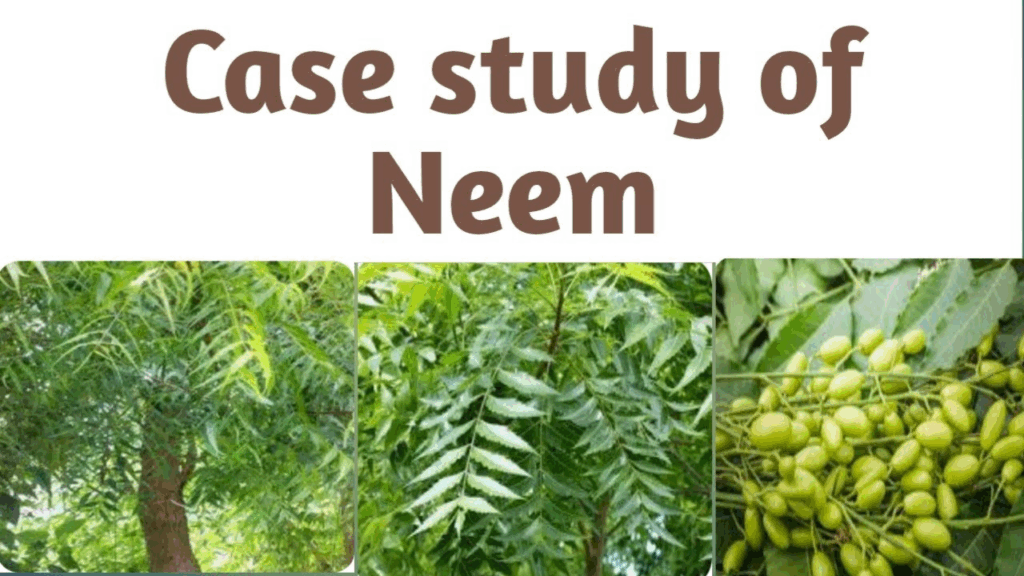
Biopiracy refers to the unauthorized commercial use of biological resources and associated traditional knowledge without proper consent or benefit-sharing. India, with its vast biodiversity and rich heritage of indigenous knowledge systems, has often been a victim of biopiracy. International corporations and research institutions have, at times, patented resources and knowledge that have been used in India for centuries. Three of the most prominent cases that highlight the legal complexities of biopiracy are those involving Neem, Basmati rice, and Turmeric. These case studies illustrate not only the exploitation of traditional knowledge but also the evolving global legal mechanisms designed to protect it.
Understanding Biopiracy and Legal Framework
Biopiracy raises critical concerns regarding intellectual property rights, indigenous rights, and biodiversity conservation.
Key Legal Instruments
- Patent Laws – Often misused to claim ownership of traditional knowledge.
- Convention on Biological Diversity (CBD, 1992) – Recognizes sovereign rights of states over biological resources and stresses benefit-sharing.
- Nagoya Protocol (2010) – Provides a framework for fair and equitable sharing of benefits arising from genetic resources.
- Indian Biological Diversity Act (2002) – Protects biological resources and traditional knowledge at the national level.
- Traditional Knowledge Digital Library (TKDL) – An Indian initiative to document traditional knowledge and prevent wrongful patents.
Case Study 1: Neem (Azadirachta indica)
Background
Neem, often called the “village pharmacy,” has been used in India for centuries as a pesticide, medicine, and antiseptic.
The Legal Battle
- In the 1990s, the US Department of Agriculture and an American multinational company were granted a patent on the fungicidal properties of neem oil.
- Indian activists, farmers, and NGOs, supported by international organizations, challenged the patent.
- The European Patent Office (EPO) revoked the patent in 2000, ruling that the use of neem extracts was part of prior traditional knowledge.
Legal Significance
- Established the principle that patents cannot be granted for knowledge that is already in the public domain.
- Strengthened India’s resolve to document traditional knowledge through TKDL.
Case Study 2: Basmati Rice
Background
Basmati rice, grown traditionally in the Indo-Gangetic plains, is valued for its aroma and long grain. It has centuries-old cultivation practices tied to Indian and Pakistani farmers.
The Legal Battle
- In 1997, US-based company RiceTec Inc. was granted a patent for certain strains of Basmati rice and its cooking methods.
- This raised concerns of biopiracy, as it threatened the livelihoods of Indian farmers and could potentially restrict Basmati exports.
- The Indian government, along with agricultural research bodies, contested the patent.
- Many of the claims were struck down by the US Patent and Trademark Office (USPTO), though RiceTec retained rights on a few varieties.
Legal Significance
- Highlighted the importance of Geographical Indications (GI tags) in protecting traditional crops.
- Led to the registration of Basmati rice as a GI in India, safeguarding farmer rights and export markets.
Case Study 3: Turmeric
Background
Turmeric has been used in India for thousands of years for medicinal, cosmetic, and culinary purposes. Its wound-healing and anti-inflammatory properties are widely recognized in Ayurveda.
The Legal Battle
- In 1995, the University of Mississippi Medical Center was granted a patent on turmeric’s wound-healing properties.
- India’s Council of Scientific and Industrial Research (CSIR) challenged the patent.
- The USPTO revoked the patent in 1997, stating that the use of turmeric in healing was not novel but a part of traditional Indian knowledge.
Legal Significance
- This was one of the first successful challenges of a biopiracy-related patent.
- Showed the necessity of documenting and publishing traditional knowledge to prevent wrongful patents.
Comparative Table of Biopiracy Case Studies
| Case Study | Resource | Patent Granted To | Legal Outcome | Key Legal Lesson |
|---|---|---|---|---|
| Neem | Medicinal & pesticidal uses | US Dept. of Agriculture & multinational | Patent revoked by EPO (2000) | Prior traditional knowledge not patentable |
| Basmati | Aromatic rice variety | RiceTec Inc. (USA) | Many claims struck down by USPTO | Importance of GI protection for crops |
| Turmeric | Medicinal plant (healing properties) | Univ. of Mississippi Medical Center | Patent revoked by USPTO (1997) | Documentation of knowledge prevents misuse |
Overview Table
| Aspect | Neem Case | Basmati Case | Turmeric Case |
|---|---|---|---|
| Year of Dispute | 1990s | 1997 | 1995–1997 |
| Type of Resource | Medicinal & pesticidal plant | Agricultural crop | Medicinal plant |
| Key Legal Body Involved | EPO | USPTO | USPTO |
| Outcome | Patent revoked | Claims limited | Patent revoked |
| Legal Impact | Prior use proof essential | Need for GI tag | Protection of traditional knowledge |
Conclusion
The cases of Neem, Basmati, and Turmeric underscore the vulnerability of traditional knowledge to biopiracy and the necessity of robust legal frameworks to protect it. These legal battles highlighted gaps in the global intellectual property system and pushed India to strengthen its domestic biodiversity laws, establish TKDL, and secure GI tags. Going forward, collaboration between governments, indigenous communities, and international organizations will be essential to prevent exploitation and ensure that local knowledge holders are fairly rewarded.
FAQs
Q1. What is biopiracy in simple terms?
Biopiracy is the commercial exploitation of biological resources or traditional knowledge without proper authorization or benefit-sharing.
Q2. Why are Neem, Basmati, and Turmeric famous examples of biopiracy?
They highlight how traditional Indian knowledge was patented abroad, sparking legal disputes that led to revocation of wrongful claims.
Q3. How does India protect against biopiracy today?
Through the Biological Diversity Act (2002), Geographical Indications Act (1999), and the Traditional Knowledge Digital Library (TKDL).

